Native plants: the backbone of our ecosystem
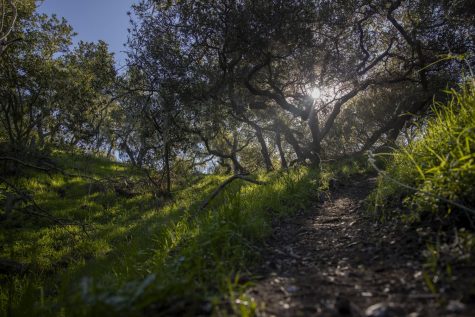
Lush meadows, multi-colored flower beds and majestic forest stands are just some of the thriving greenery Golden Gate Park has to offer. The iconic park is also a home to many plant species native to San Francisco.
With California’s diverse climates, it’s able to support the lives of all types of species, from the fan palms and Joshua trees in Southern California to the Redwoods of Northern California, or even the quintessential California poppies that crop up all over the state. However, these native plants do much more for humans than pleasing the eye, and in fact, act as the very backbone of our ecosystems.
Native plants have evolved in a specific geographic region and would still exist in the absence of humans. San Francisco, specifically, has a Mediterranean climate. A unique climate characterized by mild, wet winters and dry summers that are only found in approximately five other places in the world.
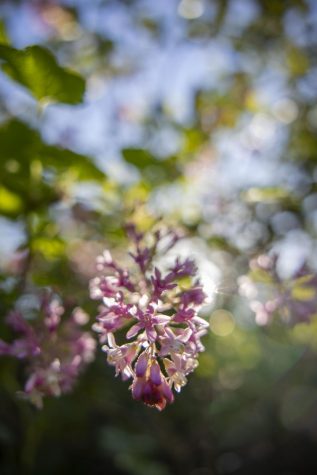
Hence the Mediterranean climate, the species native to the San Francisco Bay Area, has evolved to withstand wind, fog and periods of drought. Alongside the evolution of native plants is that of native insects, birds and mammals which all depend on one another to maintain local ecosystems’ health.
According to California Native Plant Society board member Noreen Weeden, “90% of insects depend on one particular plant as its host. So, the insects might live their entire life in this one plant,” she says.
An example of this is the California pipevine, a perennial vine endemic to the San Francisco Bay Area, which is also the only food source for the California pipevine swallowtail butterfly.
Jason Cantley, botanist and assistant professor of biology at San Francisco State University, says that the California pipevine swallowtail will only lay its eggs on the pipevine plant, which the caterpillars rely on for food and shelter in order to pupate.
“Because the city has really disrupted the habitat of this plant,” Cantley says, “We’ve really lost those butterflies in the city.”
Aside from their obvious role as pollinators, these butterflies are part of a much larger ecosystem, one that, if healthy, promotes biodiversity.
Biodiversity is simply the variety of life on earth that healthy ecosystems depend upon.
“Ecosystems that are composed mostly of native plants function such that they have the environment working in a harmonious way,” Cantley says.
More specifically, native plants in the Bay Area have adapted to the soils and climate here and have evolved with traits that promote optimum water table regulation and fire suppression. The habitats that do this well, Cantley says, “tend to have high levels of biodiversity, and that biodiversity is uniquely adapted to that place.”
Pollinators as a keystone species
Most flowering plants depend on pollinators to help produce fertile seeds. Because pollinators are depended on by countless other species, and pollinators evolved to depend on native plants, native plants are vital to maintaining local ecosystems’ health.
As a keystone species or a species whose removal would drastically affect an ecosystem, pollinator populations’ health must be prioritized.
With the virality of hashtag activism campaigns like #bringbackthebees in 2014, the knowledge of the rapidly declining native bee population became widespread. The general public was confronted with the very real possibility of losing the main pollinators of food crops. One of the more accessible ways suggested to #savethebees is planting native plants.
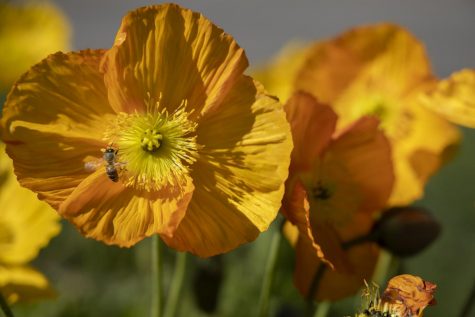
“If everybody had native plants, then we’d have a lot of bees,” says Bellal Naderi, a graduate student at the SF State Department of Ecology, Evolution and Conservation Biology. “They don’t have to only exist way out in nature somewhere,” he says. “They can exist right here in the city.”
Something as simple as a balcony planter or small yard plot of native flowers can aid the health of bees in San Francisco, as they won’t have to fly as far and likely exhaust themselves to get to their next pollination destination. Not only do they require less water, fertilizer, and herbicide to grow, but native plants are also more attractive to native pollinators and, in turn, benefit other native species.
“Not all non-native plants can be used by the species that are here,” says SF State professor of biology Gretchen Le Buhn, “There’s a really important role that native plants play because they support native insects that support native birds, native birds support native predators.”
Nature serves humans
Ecosystem services, or how people benefit from nature, are also essential to sustain human life. As mentioned, biodiverse ecosystems are typically the healthiest, and it is these systems that provide humans with the air they breathe and the water they drink. Once the biodiversity of an ecosystem is disrupted, ecosystem services are lost.
The example Cantley gives is losing a plant species that happen to be great at erosion control. Once the ecosystem begins eroding as a result, other species will be lost as well. Among those species might have been a plant that was good at maintaining water in the ecosystem.
“Suddenly,” Cantley says, “You have an ecosystem that is not only eroding, you’re having one that has much less water than it had historically when it was a biodiverse and pristine native environment,” he says.
Apart from the obvious food and water availability, other ecosystem services include carbon sequestration, soil stabilization and erosion prevention, largely due to native plants.
“In fact,” says Cantley, “The fires in California and a lot of the water issues in California (are) the result of humans altering the ecosystems and changing where native plants occur.”
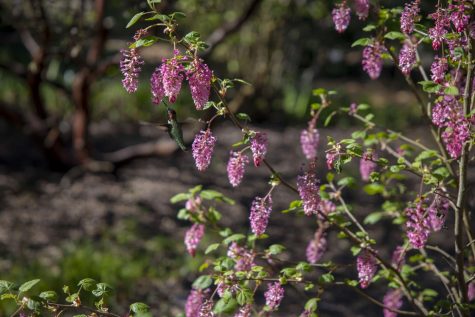
Non-native vs. invasive species
Opposite of native plants are non-native plants, species that arrived in a specific area “either because they’ve been moved here by humans, or because we’ve changed the landscape so much that they now thrive here,” says Le Buhn.
All invasive species are non-native, but not all non-native species are invasive. Basic non-native plants exist in ecosystems and don’t play a very large role, if any at all. They become invasive once they begin to outcompete other essential native species. An example of this is the Eucalyptus tree in the San Francisco Bay Area.
Eucalyptus trees were brought over from Australia in the 1800s to be used for lumber. However, “It turned out Eucalyptus didn’t grow the same in our soil environment as it did there,” Naderi says, “For whatever reason, the tree kind of twists a little bit as it grows here,” which no longer makes it the ideal lumber wood. Instead of cutting them down, the trees were left to spread and eventually naturalize. They can now be found all over the city and surrounding Bay Area.
Eucalyptus trees change the soil composition and, in turn, the life forms directly nearby. Not only do they produce a toxin that prevents other plants from growing, but they are also quite the stubborn species.
“They grow very fast, they produce a lot of seeds,” says J.R. Blair, a former biology lecturer at SF State, and “when you cut them down, they sprout like crazy.”
Adding yet again to the list of reasons why Eucalyptus trees are problematic is the flammability aspect. Not only do they regularly shed dead bark and leaves, but all parts of the tree are rich in oil, which is a fire-prone state like California can mean a recipe for disaster.
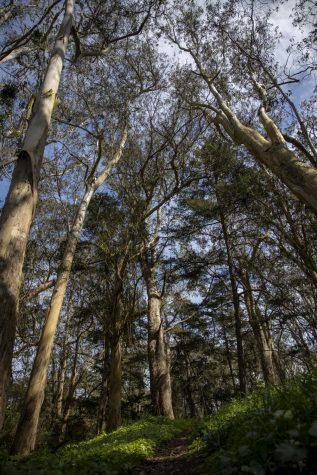
Other non-native plants that end up dying become flammable material as well, Cantley says. What results are fires that spread faster and more often. Once the non-native plants burn, they are promoted to recreate themselves, “and they just keep building up more and more biomass that’s flammable, and in the process, it kills all the native plants that are not used to these frequent and high-temperature fires,” he says.
What can be done?
As far as restoration and conservation of native habitats, individuals can push for native plants in local parks and common areas, including planting their own in personal or community gardens. “Make sure you’re being thoughtful about what you’re introducing into habitats,” says Le Buhn. “And when you have the option, choose native.”
If, for whatever reason opting for native species is not possible, folks can refer to resources like the California Invasive Plant Council to be certain that a non-native plant they may be introducing is at the very least not invasive.
“Do not plant species in your garden or local park just because it’s pretty or beautiful,” SF State lecturer of biology Maria Jose Pastor-Infantas wrote in an email, “Look into the name of the species, and think twice before planting certain plants.”
According to Le Buhn, simply valuing and appreciating the wild areas in parks where biodiversity exists can go a long way as far as conservation efforts.
“Another way to get involved is to volunteer at your local park or botanical gardens, and get more involved in your community,” Pastor-Infantas says. “You learn so much by getting down in the dirt!”

KK Interchuck (she/they) is an amateur guitarist, cat mom, and journalism and women and gender studies double major in her last semester at SF State. A...

